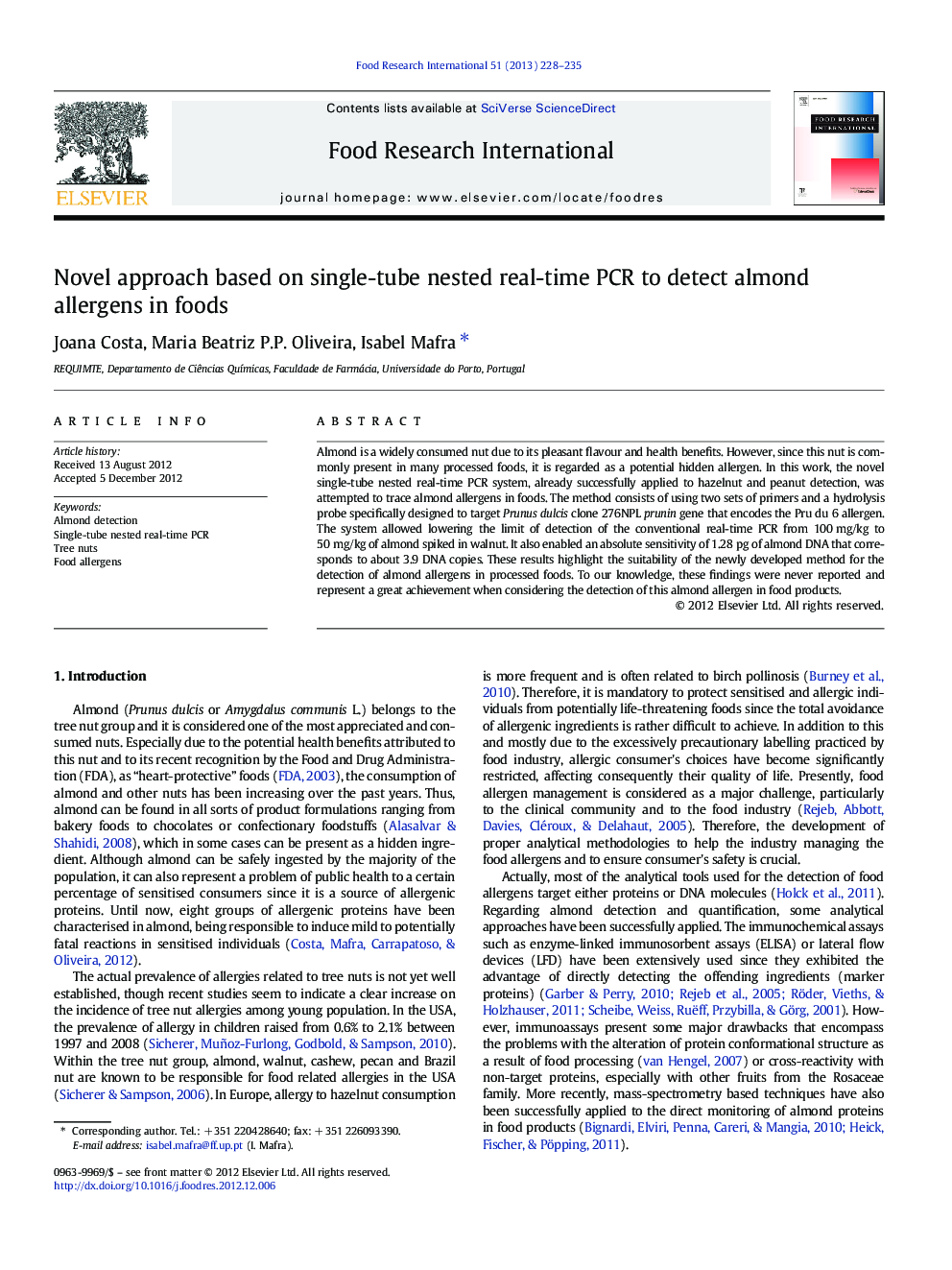| Article ID | Journal | Published Year | Pages | File Type |
|---|---|---|---|---|
| 6398360 | Food Research International | 2013 | 8 Pages |
Almond is a widely consumed nut due to its pleasant flavour and health benefits. However, since this nut is commonly present in many processed foods, it is regarded as a potential hidden allergen. In this work, the novel single-tube nested real-time PCR system, already successfully applied to hazelnut and peanut detection, was attempted to trace almond allergens in foods. The method consists of using two sets of primers and a hydrolysis probe specifically designed to target Prunus dulcis clone 276NPL prunin gene that encodes the Pru du 6 allergen. The system allowed lowering the limit of detection of the conventional real-time PCR from 100Â mg/kg to 50Â mg/kg of almond spiked in walnut. It also enabled an absolute sensitivity of 1.28Â pg of almond DNA that corresponds to about 3.9 DNA copies. These results highlight the suitability of the newly developed method for the detection of almond allergens in processed foods. To our knowledge, these findings were never reported and represent a great achievement when considering the detection of this almond allergen in food products.
⺠Single-tube nested real-time PCR as a high sensitive assay to trace food allergens. ⺠Detection of prunin gene that encodes the almond allergen amandin (Pru du 6). ⺠Comparison of conventional real-time PCR with single-tube nested real-time PCR.
